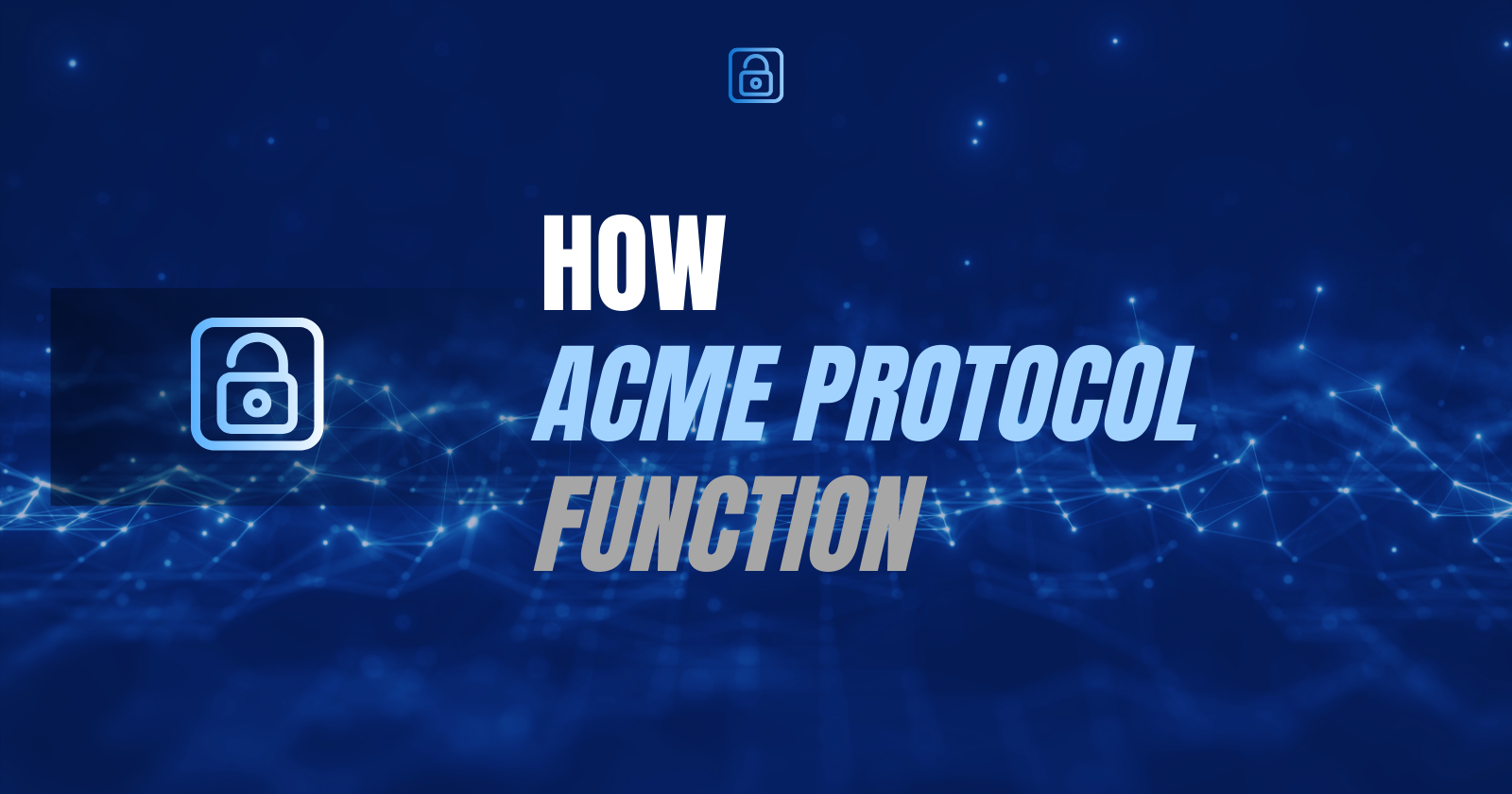How ACME Protocol Functions
 Riya Sander
Riya Sander
Everyone knows that secure communication between web servers and clients is not an easy task. The ACME protocol helps to make it easier to get and manage digital certificates. It simplifies and automates the entire process, enabling it to secure HTTPS connections. This article explains the details of how the ACME protocol functions.
What is the ACME Protocol?
The ACME protocol (Automated Certificate Management Environment) is a communications protocol designed to automate the method of managing digital certificates.
It makes it easy to get, renew, and revoke SSL/TLS certificates. It does this by automating the communication between CAs and the organization’s servers. The main purpose of ACME is to keep internet communications secure. It does this by checking domain ownership, issuing certificates, and automating the management of these certificates.
This protocol has changed the Public Key Infrastructure (PKI). It reduces the need for manual work and offers affordable and reliable ways to manage certificates.
How Does ACME Protocol Work?
ACME is mainly used to obtain domain-validated (DV) certificates. Because DV certificates do not need advanced verification; only the domain is validated. It does not require any human intervention.
The protocol can also be used to obtain higher-value certificates. For example, organization-validated (OV) and extended-validation (EV) certificates. However, these cases need additional support mechanisms alongside the ACME agent.
The intent of the ACME protocol is to set up an HTTPS server and automate the process of getting trusted certificates. This keeps away the need for manual work that sometimes could lead to mistakes or errors. To use the protocol, both an ACME client and an ACME server are needed. The communication is done through JSON messages over a secure HTTPS connection.
Components of the ACME Protocol
The ACME protocol operates through two main components:
ACME Client: It can drive on any server or device that needs a trusted SSL/TLS certificate. It asks certificate management to take action. For example issuance, renewal, or revocation.
ACME Server: This runs at a Certificate Authority (CA), like Let’s Encrypt, and responds to requests from authorized ACME clients.
There are many different ACME clients available. This authorizes organizations to choose the CA they prefer, as long as the CA supports ACME.
Let’s Encrypt recommends using the Certbot client because it is user-friendly. That sustains many operating systems and comprehensive documentation. Other popular ACME clients are ACMESharp, acme-client, GetSSL, and many others. They are available on GitHub.
Adopting ACME permits businesses to simplify the lifecycle of their digital certificates. It holds their services secure and up-to-date without manual effort.
Challenges and Tokens: A critical part of the ACME protocol is domain validation. The client has to prove that it controls the domain it is asking for a certificate for. It's done via different challenges like DNS, HTTP, or TLS-ALPN. The server generates tokens for the client to present in these challenges to verify domain ownership.
ACME Protocol Workflow
The ACME protocol obeys a clear workflow for automating certificate management. Here’s how it works:
Requesting a Certificate: The client begins the process by sending a certificate request to the ACME server. This request includes the domain name. It indicates the domain for the certificate being requested.
Domain Validation: The server reacts by allocating a challenge to the client. The challenge could be:
DNS Challenge: The client must create a specific DNS record to prove control of the domain.
HTTP Challenge: The client hosts a file at a specified URL on the domain.
TLS-ALPN Challenge: The client proves control via TLS connection.
Certificate Issuance: Once the challenge is completed. The ACME server gives the certificate to the client. The certificate can now be installed on the server to enable secure HTTPS communication.
Certificate Renewal: One of the best advantages of the ACME protocol is its ability to automatically renew certificates. Clients can schedule systematic renewals. That ensures that certificates never expire without manual intervention.
Conclusion
The ACME protocol is a critical innovation in modern web security. That makes managing digital certificates easier, faster, and more secure. ACME automates checking domains, issuing certificates, and renewing them. It has made it easier for people to use HTTPS and keep browsing and data exchange online safe.
Looking ahead, the ACME protocol will keep changing and improving. It will show stronger and more flexible ways to manage web security certificates. That makes things easier for administrators and improves overall cybersecurity practices.
Subscribe to my newsletter
Read articles from Riya Sander directly inside your inbox. Subscribe to the newsletter, and don't miss out.
Written by
